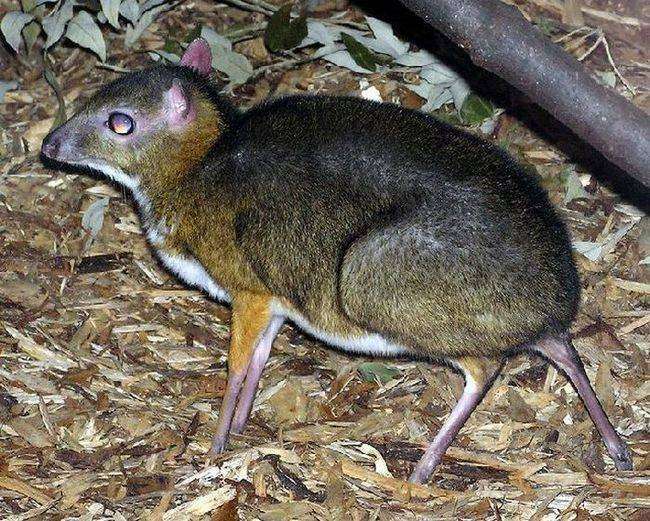|
|
Mouse Deer
|
Biology
The family was widespread and successful from the Oligocene (34 million years ago) through the Miocene (about 5 million years ago), but has remained almost unchanged over that time and remains as an example of primitive ruminant form. They have a four-chambered stomach to ferment tough plant foods, but the third chamber is poorly developed. Though most species feed exclusively on plant material, the Water Chevrotain occasionally takes insects and crabs, or scavenge meat and fish. Like other ruminants, they lack upper incisors, and give birth to only a single young.
In other respects, however, they have primitive features, closer to non-ruminants such as pigs. All species in the family lack horns, but both genders have elongated canine teeth. These are especially prominent in males where they project out on either side of the lower jaw, and are used in fights. Their legs are short and thin, which leave them lacking in agility, but also helps to maintain a smaller profile to aid in running through the dense foliage of their environment. Other pig-like features include the presence of four toes on each foot, the absence of facial scent glands, premolars with sharp crowns, and the form of their sexual behaviour and copulation.
|
|









